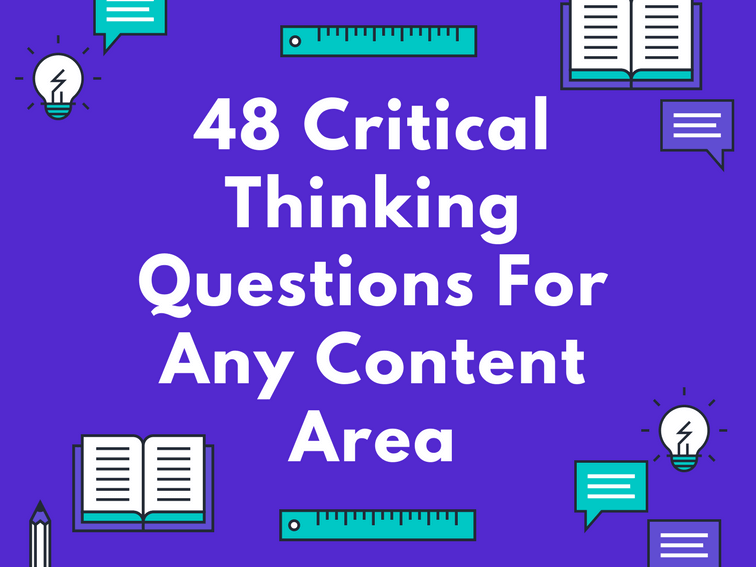Do you interested to find '48 critical thinking questions for any content area'? All the details can be found on this website.
Table of contents
- 48 critical thinking questions for any content area in 2021
- Critical thinking situations for students
- Psychology critical thinking questions
- Critical thinking exam questions and answers
- How to ask critical thinking questions
- Critical thinking game questions
- Critical thinking questions for college students
- Critical thinking is self-guided
48 critical thinking questions for any content area in 2021
 This image representes 48 critical thinking questions for any content area.
This image representes 48 critical thinking questions for any content area.
Critical thinking situations for students
 This picture shows Critical thinking situations for students.
This picture shows Critical thinking situations for students.
Psychology critical thinking questions
 This image shows Psychology critical thinking questions.
This image shows Psychology critical thinking questions.
Critical thinking exam questions and answers
 This image representes Critical thinking exam questions and answers.
This image representes Critical thinking exam questions and answers.
How to ask critical thinking questions
 This image demonstrates How to ask critical thinking questions.
This image demonstrates How to ask critical thinking questions.
Critical thinking game questions
 This picture demonstrates Critical thinking game questions.
This picture demonstrates Critical thinking game questions.
Critical thinking questions for college students
 This picture illustrates Critical thinking questions for college students.
This picture illustrates Critical thinking questions for college students.
Critical thinking is self-guided
 This image shows Critical thinking is self-guided.
This image shows Critical thinking is self-guided.
Why are there so many critical thinking questions?
This question is what inspires the creation of seemingly endless learning taxonomies and teaching methods: our desire to pin down a clear definition of what it means to think critically and how to introduce that skill in the classroom. This makes critical thinking questions–well, critical.
Which is the best cheat sheet for critical thinking?
The Ultimate Cheat Sheet For Digital Thinking by Global Digital Citizen Foundation is an excellent starting point for the ‘how’ behind teaching critical thinking by outlining which questions to ask. It offers 48 critical thinking questions useful for any content area or even grade level with a little re-working/re-wording.
What does it mean to think critically about something?
As Terry Heick explains in What Does Critical Thinking Mean?: “To think critically about something is to claim to first circle its meaning entirely—to walk all the way around it so that you understand it in a way that’s uniquely you. The thinker works with their own thinking tools–schema. Background knowledge. Sense of identity.
What is the process of meaning making in critical thinking?
Meaning Making is a process as unique to that thinker as their own thumbprint. There is no template. After circling the meaning of whatever you’re thinking critically about—navigation necessarily done with bravado and purpose—the thinker can then analyze the thing.
Last Update: Oct 2021